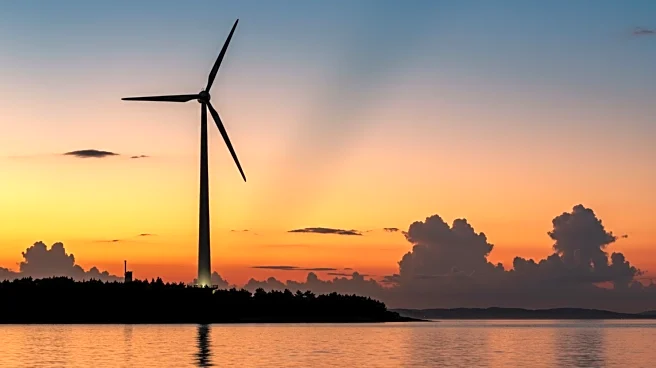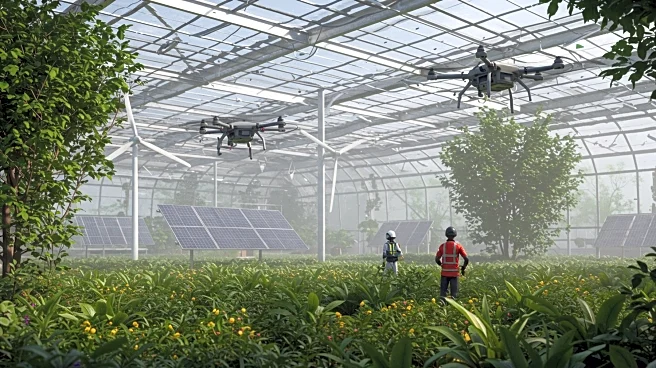What's Happening?
The future of Robbins Island, located off Tasmania's north-western coast, is under scrutiny as the federal environment minister, Murray Watt, is set to decide on a proposal for a large windfarm. Acen Australia plans to invest over $3 billion to construct up to 100 wind turbines, a wharf, and a bridge on the island, which is considered one of the best wind energy sites in Australia. The project is supported by Tasmania's Liberal and Labor parties and the business community, citing economic benefits and job creation. However, environmental groups and scientists oppose the development, arguing it threatens critical habitats for migratory shorebirds and endangered species like the Tasmanian wedge-tailed eagle and the orange-bellied parrot.
Why It's Important?
The decision on the Robbins Island windfarm proposal is significant as it highlights the ongoing debate between renewable energy development and environmental conservation. While the project promises economic growth and increased renewable energy capacity, it poses risks to biodiversity and critical habitats. The outcome could set a precedent for how Australia balances environmental protection with the need for sustainable energy solutions. Stakeholders such as conservationists and the business community are closely watching the decision, which could impact future renewable energy projects and environmental policies.
What's Next?
A decision from Minister Watt is expected by August 29, which will determine whether the windfarm can proceed with conditions to mitigate environmental risks. If approved, Acen Australia plans to implement measures to protect wildlife, including reducing the number of turbines and creating buffer zones. Environmental groups, including the Bob Brown Foundation, are preparing for potential legal action and public protests if the project is approved, indicating a possible escalation in environmental advocacy efforts.
Beyond the Headlines
The Robbins Island windfarm proposal underscores the challenges of implementing renewable energy projects in ecologically sensitive areas. It raises questions about the adequacy of current environmental laws and the need for reform to better guide the rollout of renewable energy while protecting biodiversity. The decision could influence future policy changes and the approach to balancing economic development with environmental stewardship.












